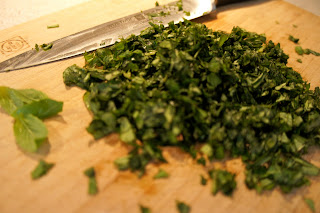The purchase of my six mini pie dishes has been a wonderful investment. I can make six mini quiches one day and have a delicious dinner for my husband and me three dinners in a row. Throw in a small salad and you have a complete and satisfying meal.
When I was a kid, my mother only made one kind of quiche: quiche lorraine, for which she used our fabulous local Comte cheese as well as petits lardons. My mom is a creature of habit and she has been cooking the same things the same way for decades. If I told her I made quiches using tomatoes, shallots and thyme, and replaced her beloved Comte with goat cheese, her heart may skip a beat.
Of course, my ingredients have nothing extraordinary, but their uniqueness is in their freshness: Black tomatoes from our local famers market, fresh thyme, fresh goat cheese, local eggs and cream and homemade pie dough.
The pie dough I made is based on a recipe by famed U.K. -based, French chef Michel Roux. Thumbs up Michel: your recipe worked out well for me!
Pie dough or Pate Brisée:
1 ¾ cups (250g) all-purpose flour
2/3 cup (150g) butter, cut into small pieces and slightly softened
1tsp salt
Pinch of sugar
1 medium egg
1 tbsp (15ml) cold milk
Mix together the flour, sugar and salt on your kitchen counter or in a large bowl. Make a well, and in the middle of it, put the butter and egg. Using your fingertips, mix and cream these together.
Blend until you get a grainy texture, then, add the milk. Incorporate gently with your fingertips until the dough begins to hold together.
When the dough is smooth, roll into a ball, wrap in plastic wrap and chill at least one hour.
Tomato and Goat Cheese Mini Quiches: (Petites Quiches aux tomates et Fromage de Chevre)
For 6 mini quiches
Pie dough or pate brisée
6 small tomatoes on the vine
2 large shallots, finely chopped
½ cup fresh goat cheese, kept cold for easier crumling
fresh thyme
4 eggs
½ cup heavy cream
½ tsp salt
¼ tsp pepper
¼ tsp nutmeg
Flour each pie dish.
On a lightly floured counter, roll out the dough to a circle, 1/8 inch (3mm) thick, and cut out circles of dough large enough to line up each pie dish (My dishes are 4 inches in diameter, so I cut out 6 inch diameter circles). Prick the bases with a fork to air out the dough. Line each crust with parchment paper and fill these up with pie weight or dry beans. Refrigerate for at least 30 minutes. This will prevent shrinkage of the dough when you bake the crusts.
Preheat the oven to 350F.
In the meantime, sautee the chopped shallots in a lightly oiled frying pan until evenly golden. Reserve.
Pick the green leaves off each branch of fresh thyme. You should get ½ cup to ¾ cup of thyme leaves.
Cut each tomato in half, and each half in slices about ¼ inch thick. Reserve.
Beat together the eggs, cream, salt, pepper and nutmeg.
Bake the quiche crust (still covered with pie weights) for 10 minutes.
Fill each crust as follow:
- - The sautéed shallots at the bottom
- - Thyme
- - Crumbled goat cheese
- - Slices of tomatoes, fanned out
- - Thyme
Finally, fill up the remaining space in the crust by pouring the creamy egg mixture right in the middle of each quiche.
Bake for 40 to 45 minutes in the middle of the over, until the tomatoes appear to be cooked and the custard is slightly golden.
Let the quiches cool and serve at room temperature with a salad of baby spinach, quail eggs and shavings of pecorino cheese. A bottle of rose wine wouldn’t hurt either (if you are not pregnant).



















































